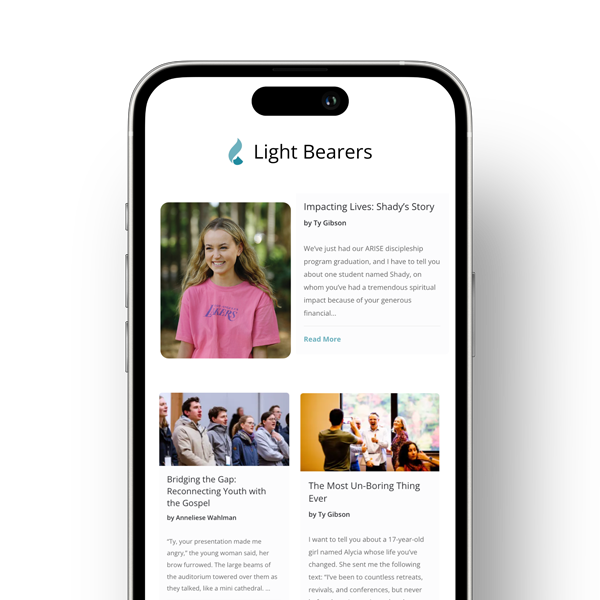Zingy, zesty, and bright. That’s how some describe the taste of gooseberries. Others say they’re like sour grapes. Scientific circles refer to them as Phyllanthus emblica or Emblica officinal. In Sanskrit its name is “Amalaki,” which means ‘the sustainer.’ In Hindi, however, Indian gooseberries are called “Amla.” Amla has been highly esteemed for centuries in Ayurvedic medicine and used to treat numerous ailments. More recently, research that backs up Amla’s efficacy has caught the West’s attention. In fact, we are impressed enough to have nicknamed it the “wonder berry.”
In India, Amla has been used to enhance digestion, treat constipation, fever, cough, asthma, the heart, the eyes, to stimulate hair growth, etc. Most likely one of the reasons behind its ability to improve an array of health conditions is it contains a litany of bioactive substances and numerous plant chemicals—with wonderful therapeutic potential—such as ellagic acid, gallic acid, and quercetin. Amla also contains a tremendous amount of vitamin C.
Amla is said to have anti-diabetic, anti-cancer, anti-inflammatory, anti-bacterial, antioxidant, liver protective, anti-diarrheal, and immuno-modulatory properties. That’s an impressive list. Let’s take a look at some research backing it up.
ANTIOXIDANT
An antioxidant protects the body from free radical damage and blunts what’s called oxidative stress. Amla is said to contain 75 times the antioxidant power of goji berries, 60 times that of pomegranates, 2.5 times of açaí berries, and twice the power of turmeric!1
IMMUNO-MODULATOR
The role of immune system modulation is extremely important. Without it we get problems like allergies, asthma, autoimmunity, and chronic inflammation. A modulator helps the two arms of the immune system to behave in a balanced way, improving our defense against disease while preventing over-activity.2
DIABETES
The research with Amla and diabetes has been mostly conducted with animals. Rats induced with type 2 diabetes were given an Amla extract for 28 days. Fasting blood sugar significantly decreased and serum insulin increased. Insulin to glucose ratio increased, meaning the pancreas began producing sufficient amounts of insulin. When researchers looked closer, via immuno-staining of the pancreas, they found that the lower dose of Amla extract (250 mg/kg/day) increased the size of β-cells (pancreatic cells that produce insulin). But with the larger dose (500 mg/kg/day), they observed an increase in β-cell numbers in diabetic rats.3
Another study gave animals either Amla-extracted gallic acid or Amla juice. Both improved insulin sensitivity and reduced obesity.4
One study on humans used Amla powder. Individuals with diabetes who received 1-3 grams of Amla powder a day experienced a reduction in fasting and 2-hour post-meal blood sugars.5 Dr. Michael Greger wittily shares how Amla powder was as effective as Glyberide, a common diabetes medication. The only side effect was a dramatic decrease in blood cholesterol and triglycerides.6
BLOOD VESSEL HEALTH
Fifty-nine individuals with metabolic syndrome were given 250 mg and 500 mg of an Amla liquid extract twice daily. Researchers looked to see how supplementation would impact endothelial dysfunction, referring to blood vessel health, which is a hallmark for atherosclerosis and hypertension. The researchers also marked systemic inflammation and the blood lipid profile. At 8 and 12 weeks the researchers found that oxidative stress was reduced and one of the body’s most valuable antioxidants—glutathione—increased. Total cholesterol was reduced 11% after 12 weeks. A 21.8% reduction in LDL cholesterol was experienced, and triglycerides came down 19.22% with the 500 mg twice daily. This dose was more effective than the 250 mg.7
Sixty middle-age adults whose total cholesterol was >240 mg% and LDL cholesterols >130 mg% were studied. Forty of them received 400 mg/day of Amla capsules for 42 days. The other 20 were given Simvastatin, a common drug used to lower cholesterol levels. The researchers found that both Amlaand Simvastatin produced similar changes in the lipid profile.
“Of the 40 patients receiving Amla, 28 were hypertensive while of the 20 patients receiving Simvastatin, 10 were hypertensive. At the end of the treatment, a total of 27 patients showed improvement in their blood pressure. Of these, 21 patients were on Amla and 6 on Simvastatin therapy.”8
FATTY LIVER
Non-alcoholic fatty liver disease (NAFLD) is the most common chronic liver disease. In Western countries, the prevalence of NAFLD in the general adult population is 20-30% and about 90% in morbidly obese individuals. Rather than being caused by excess alcohol, it results from an imbalance between uptake of fat and its oxidation and export. It is associated with insulin resistance, excess sugar and fat intake, fast food, and inactivity. It just so happens that Amla “exhibits inhibitory effects” on NAFLD and subsequent liver damage. It improves the unhealthy lipid levels as we mentioned above, lightening the liver’s load. In animals, Amla was found to decrease body weight (especially reducing abdominal fat), enhance the body’s ability to protect itself, and improve liver health by reducing fat deposition there.9
Though not a cure-all, Amla contains a tremendous variety of healing properties, placed there intentionally by the true Sustainer. “Who is like you, O Lord, among the gods? Who is like you, majestic in holiness, awesome in glorious deeds, doing wonders?” (Exodus 15:11). One of these wonders He happened to package in a little, obscure sour berry.
1. “Amla–The Definitive Guide to the World’s Most Powerful Antioxidant,” Mastering Diabetes, https://www.masteringdiabetes.org/Amla-definitive-antioxidant.
2. S. Yadav et al., “Traditional knowledge to clinical Trials: A review on therapeutic actions of Emblica officinalis,” Biomedicine & Pharmacotherapy, Vol. 93, (2017):1292-1302.
3. N. Fatima et al., “Ellagic acid in Emblica officinalis exerts anti-diabetic activity through the action on β-cells of pancreas,” National Center for Biotechnology Information, https://www.ncbi.nlm.nih.gov/pubmed/26593435.
4. B. Variva, A. Bakrania & S. Pate, “Antidiabetic potential of gallic acid from Emblica officinalis: Improved glucose transporters and insulin sensitivity through PPAR-γ and Akt signaling,” National Center for Biotechnology Information, https://www.ncbi.nlm.nih.gov/pubmed/31064680.
5. M.S. Akhtar, A. Ramzan, A. Ali & M. Ahmad, “Effect of Amla fruit (Emblica officinalis Gaertn.) on blood glucose and lipid profile of normal subjects and type 2 diabetic patients,” National Center for Biotechnology Information, https://www.ncbi.nlm.nih.gov/pubmed/21495900.
6. M. Greger, “Amla vs. Diabetes,” Nutrition Facts, https://nutritionfacts.org/video/Amla-versus-diabetes.
7. U. Pingali et al., “Evaluation of the effects of a standardized aqueous extract of Phyllanthus emblica fruits on endothelial dysfunction, oxidative stress, systemic inflammation and lipid profile in subjects with metabolic syndrome: a randomised, double blind, placebo controlled clinical study,” BMC Complementary and Alternative Medicine, vol. 19,1 97. 6 (2019), https://www.ncbi.nlm.nih.gov/pmc/articles/PMC6503348/.
8. B. Gopa, J. Biswas et al., “A comparative clinical study of hypolipidemic efficacy of Amla (Emblica officinalis) with 3-hydroxy-3-methylglutaryl-coenzyme-A reductase inhibitor simvastatin,” Indian Journal of Pharmacology, vol. 44,2 (2012): 238-42, https://www.ncbi.nlm.nih.gov/pmc/articles/PMC3326920/.
9. C. Huang et al., “The hepatoprotective effect of Phyllanthus emblica L. fruit on high fat diet-induced non-alcoholic fatty liver disease (NAFLD) in SD rats,” National Center for Biotechnology Information, https://www.ncbi.nlm.nih.gov/pubmed/28128372.

Risë Rafferty, RDN
Risë is a Registered Dietitian Nutritionist (RDN) and has been writing and teaching about health for many years. She loves the health message and takes great pleasure in seeing people thrive by the application of its principles. Her research and down-to-earth manner allow her to offer up the health message in both an intelligent and accessible manner. She and her husband, James Rafferty, have two children.


